A couple of weeks ago I was delighted to be invited into Campion Hall. They’d recently given a fresh lick of paint to their old senior common room, what in smart circles is called the drawing room, (the place you ‘withdraw’ to after dinner.) I was keen to take a look, as I’d been told the colour scheme was not what you might expect. Not a whiff of a magnolia, not a sniff of an off-white or a taupe. For the walls of the D’Arcy Room as it is now called, are painted a glossy black. Farrow and Ball’s Peaen Black to be exact, (fitting for a religious institution). And while this might seem daring, this is how it was always meant to be. After tiny scrapings of the old paint were discovered behind the lamps, it’s as good a match to that with which it was first decorated back in 1936 that could be found. Black with the teeniest touch of red. The vision of the most famous architect of his day, Edwin Lutyens. Campion Hall his only Oxford building.
You can find the Jesuit college on Brewer Street, a narrow lane opposite the main entrance to Christ Church, that I often use as a cut through to avoid the bus heavy traffic of St Aldates. In medieval times the high walls on either side would have echoed to the cries of butchers. Just outside the city walls, (a short length still survives on the north side propping up Pembroke College) it was first called ‘Sleyng’ Lane, by all accounts a bloody, filthy, smelly seething mass of bodies both human and animal. Then the brewers took over. Indeed, Campion Hall is built on the site of the old Elizabethan brewer’s house, Micklem Hall. Quite different to today. Now Brewer Street is a quiet thoroughfare, the only sounds those from the playground of Christ Church Cathedral School at one end, and small groups of students taking the high glass bridge (nicknamed the Bridge of Thighs) connecting the two sites of Pembroke College at the other.
Campion Hall is in the middle. I’ve always found its frontage, though built from the warm honey stone of so much of Oxford, more intimidating than most, its high up windows veiled in a kind of inward-looking secrecy. But approach the recessed, arched doorway, and I have only to push gently and the door swings open. There is no gatekeeper or porter’s lodge. Choosing from a list of internal numbers on the wall by the touch telephone, and I am met by my host Professor Peter Davidson, Senior Research Fellow and Curator of the Collections here. A more friendly, genial and enthusiastic advocate for the place it would be hard to imagine. Inside you feel as though have entered a country house, all staircases, rugs, wooden floors and light bouncing off the walls. There are no figures in black sweeping though the corridors holding gold crucifixes, only a healthy mix of men and women graduates and fellows in ordinary attire, heading for lunch. I’ve clearly been reading too much Dan Brown.
Campion Hall is not a college but one of the University’s four permanent private halls, all run by Christian denominations. Before the Universities Tests Act of 1871 university degrees and positions had been open only to men (women had to wait until 1920) who were members of the Church of England, making it a closed shop for Catholics and Non-Conformists alike. Campion Hall (then called Clarke’s Hall) founded in 1896, became the first Catholic student body in Oxford for over four centuries. “It was a very small house then and it’s a fairly small house now,” explains Davidson, of the place first situated on St Giles, moving only to the current location after the Jesuit priest Father Martin D’Arcy, after which the black room is named, was made Master in 1933. There’s a portrait of him by Augustus John hanging in the dining hall, his bright, piercing eyes showing a fierce intellect and genial composure. “Hospitable, kind, urbane, he was the first Roman Catholic public intellectual in England,” says Davidson. “He was on the radio a lot. He seems to know everybody. Catholic, Protestant, Jewish. There was a lot of anti-Catholic sentiment at the time, and he was very much somebody who was trying to build a bridge”
It doesn’t seem so surprising then that he commissioned Edwin Lutyens, not a Catholic, to build the new Jesuit hall on Brewer Street. D’Arcy wanted something exciting but quintessentially English to represent his approach. Lutyens was famous for producing both. Lutyens, by then in his sixties and with 550 buildings to his name, had never designed an Oxford college. This was as near as he was going to get. And for this he was willing to do it on the cheap.
So clever was his design, though, you would never know. Simple, restrained maybe from a man who had designed the grand Viceroy’s House in New Delhi and Liverpool Cathedral. But even in the ‘black room’, where gold framed portraits of Stuart monarchs hang from the panelled walls and Chinese influenced pieces of artwork (the Jesuits travelled widely in China) from D’Arcy’s huge collection are arranged on small tables, everything is carefully considered. “This is a room mostly used for entertaining. It’s an evening room. So black is very good,” says Peter as we sit on the red chairs, added very much in the spirit of their splendid surroundings. “The grandness of just using a bit of black and a gold picture frame is quite extraordinary. How effective it is.”
It is apparently one of Lutyens’s standard drawing room schemes. His own were all black, some with green stained floors and yellow curtains. They sound fabulous. “The idea came from the Russian ballet which first performed in London in 1911,” says Peter. “That’s where most decoration in England high style comes from. You get these brilliant contrasts of colour, and you start getting these black rooms with very bright objects in them. It’s west end, it’s smart and it’s also a way of achieving magnificence very cheapy.” I think it works. The black looks slightly different depending on which angle you view it. The high shine reflects the light and sets off the fixtures and fittings a treat. To have been a fly on the wall back in the day when Graham Greene, JRR Tolkien, Muriel Spark, Edith Sitwell and Evelyn Waugh were regular visitors. I’d imagine the chat was pretty lively. “You never knew whom you would meet at Campion Hall” writes Waugh. Which is I suppose what D’Arcy hoped for and what Lutyens gave him with his ‘black room’, so very modern in its time.
As I take my leave, I realise I have barely scratched the surface of what Lutyens was thought to have considered his best building. There are apparently lights hanging from the ceiling of the chapel shaped like Cardinal’s hats, Peruvian portraits of angels carrying muskets, specially designed pigeon-holes for the Fathers’ napkins, and Lutyens library spider back chairs so delicate very few remain. Peter informs me that their next project is to restore the dining room. I wonder that the colour scheme will be. I do hope I will be invited back to find out.
Main picture: Mary of Modena, the Catholic wife of James 11, later to live in exile with him in France.
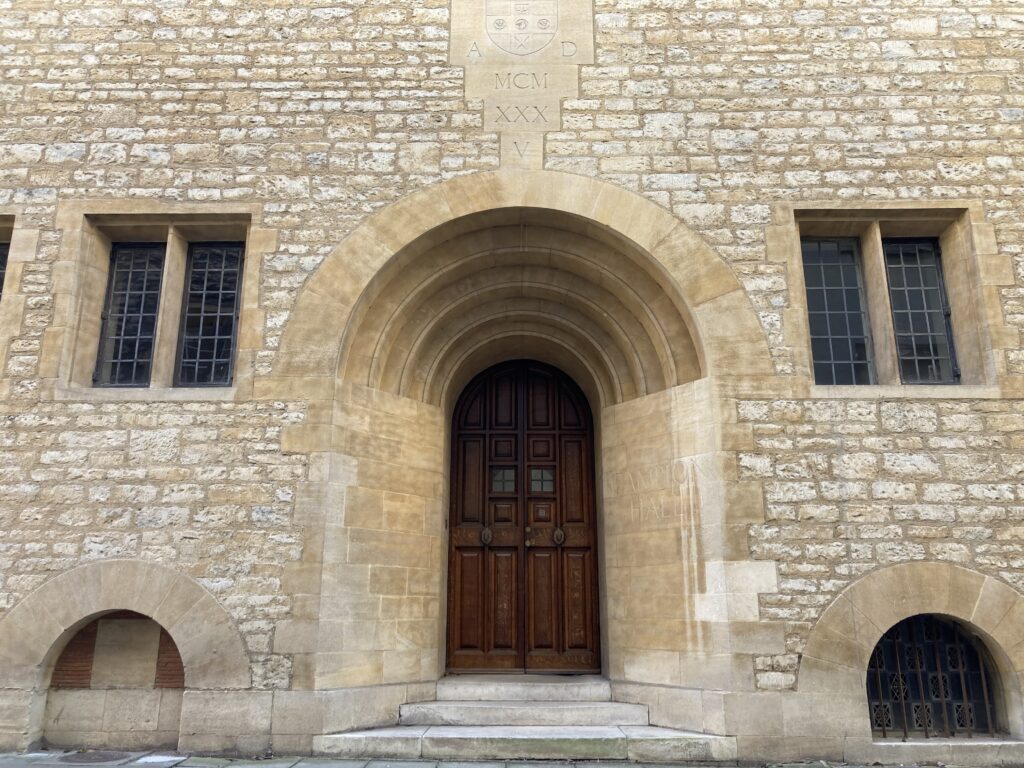
The front gate to Campion Hall on Brewer Street
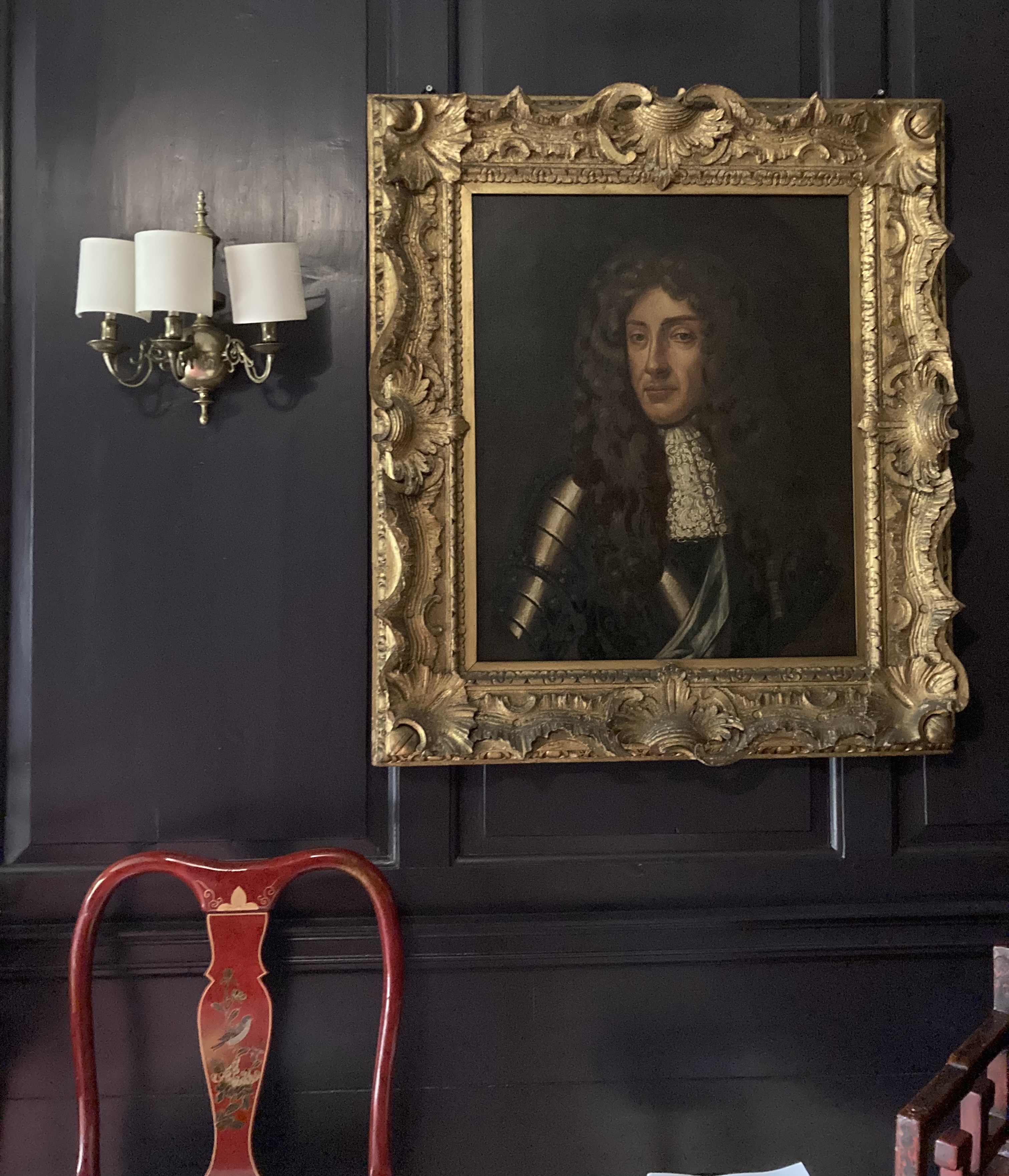
James 11
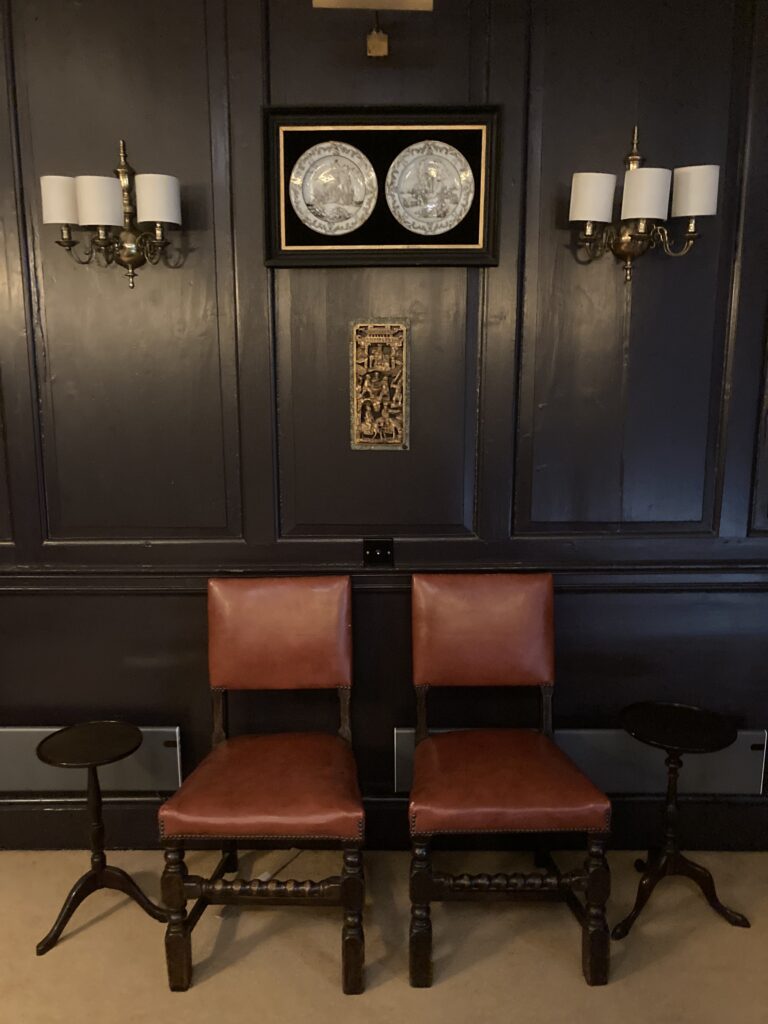
D’Arcy was a great collector. He knew all the London dealers.
These Chinese porcelain plates were made by the Jesuit atelier in Beijing in the 18th century, after Flemish engravings. There are lots of hybrid Chinese Jesuit things in ‘the black room’.
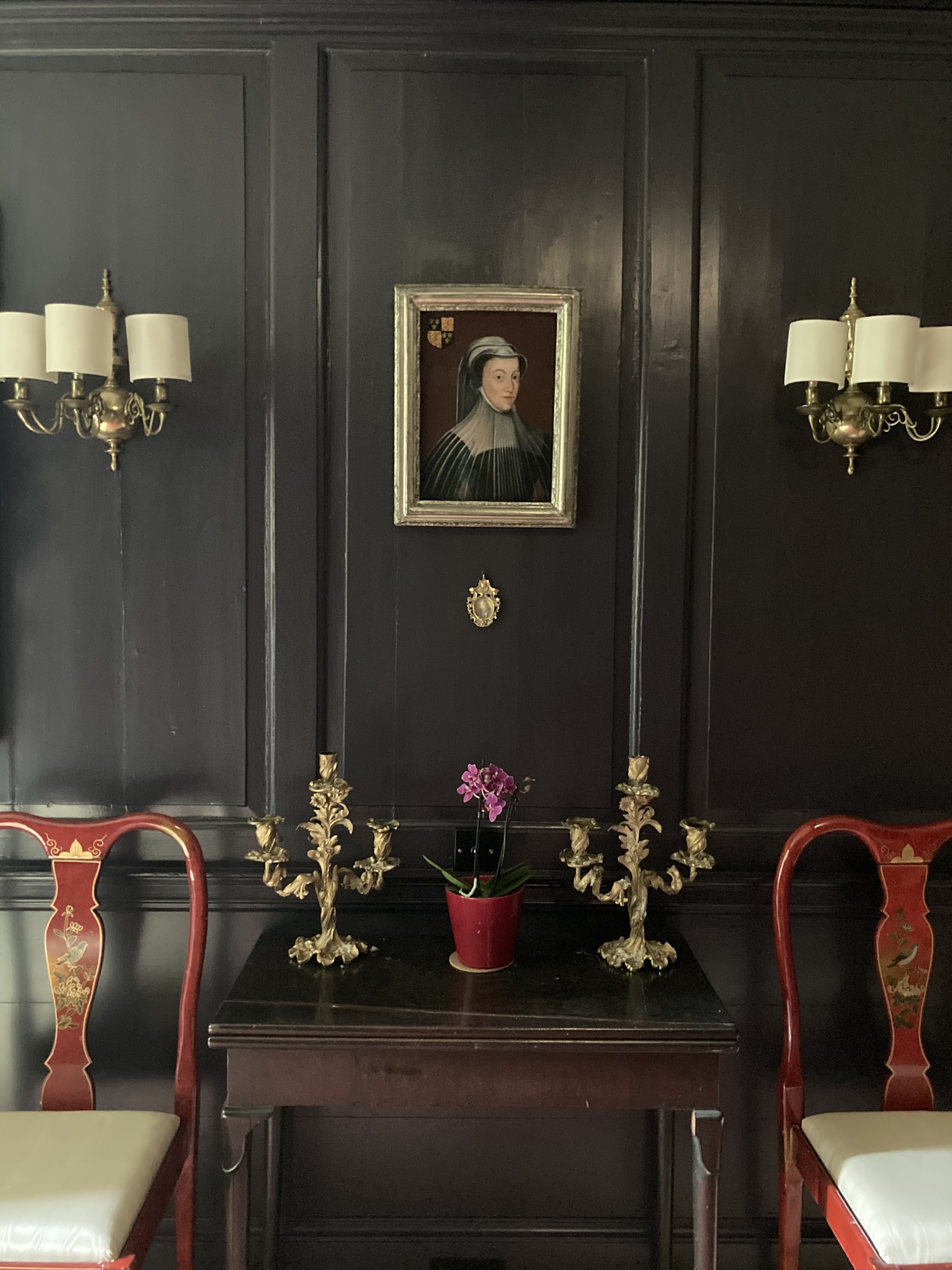
A portrait of Mary Queen of Scots and under a miniature of James Edward Francis Stuart, James 11 son. He was known as ‘The Old Pretender”, the Catholic heir to the throne after James was deposed in 1688. The 18th century panelling left as a nod to D’Arcy’s time spent at school and then University at Stonyhurst in Lancashire. Catholics don’t come to University in Oxford in any numbers until after 1896. Stonyhurst has a dark panelled walnut parlour with portraits of the Catholic Stuarts, very like the D’Arcy Room at Campion Hall.
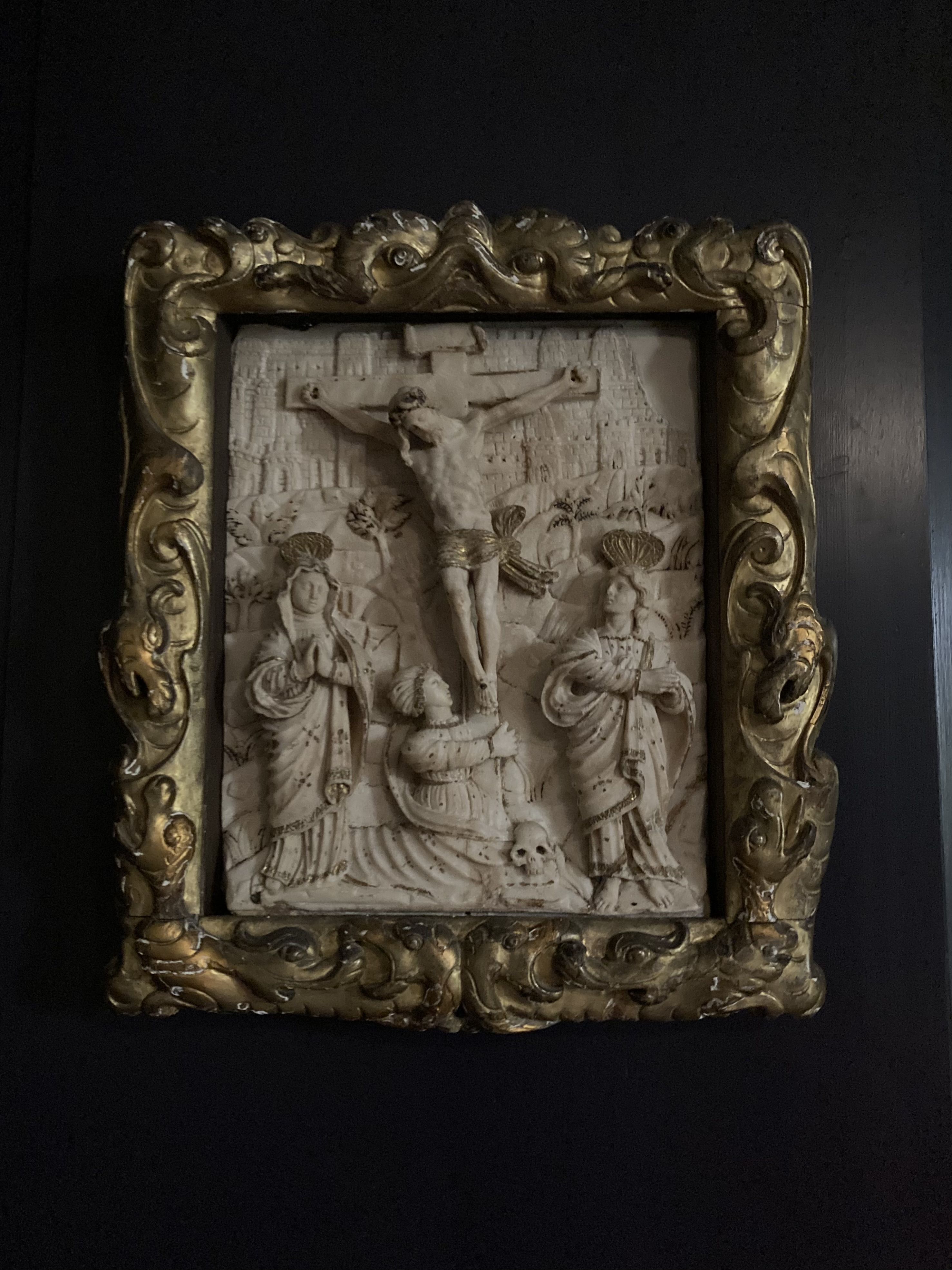
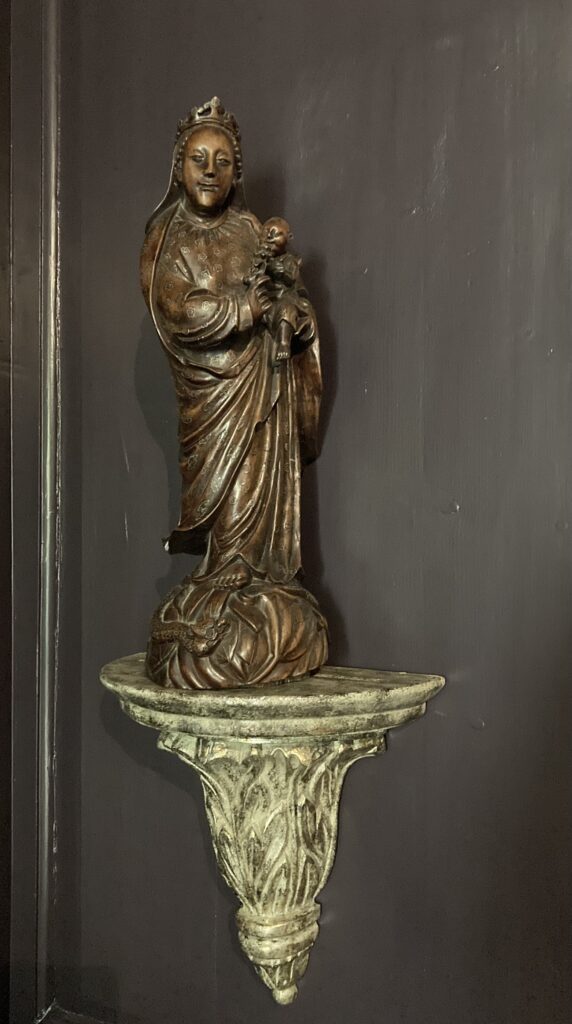
A hardwood Madonna on the silver bracket. Chinese 18th century. And she’s not standing on the dragon. While the Virgin would stand on the serpent in European iconography, in China the dragon is auspicious so she’s standing with the dragon like the goddess Guanyin would.
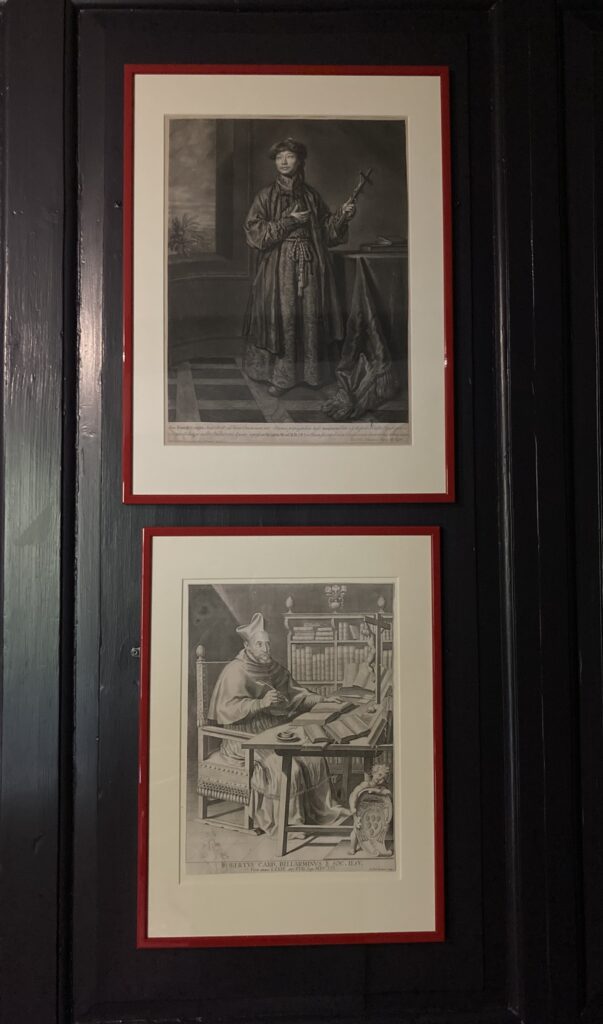
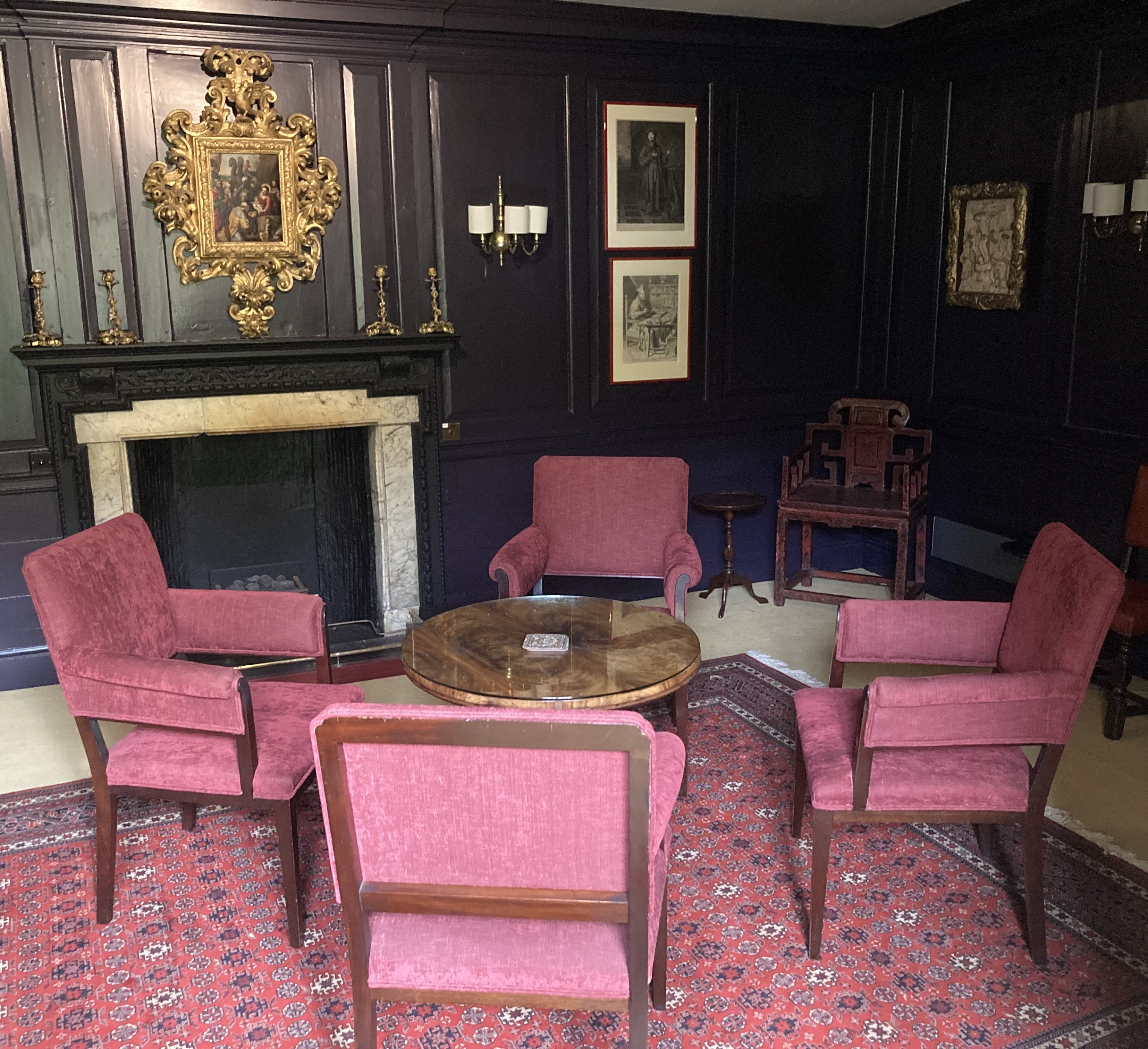
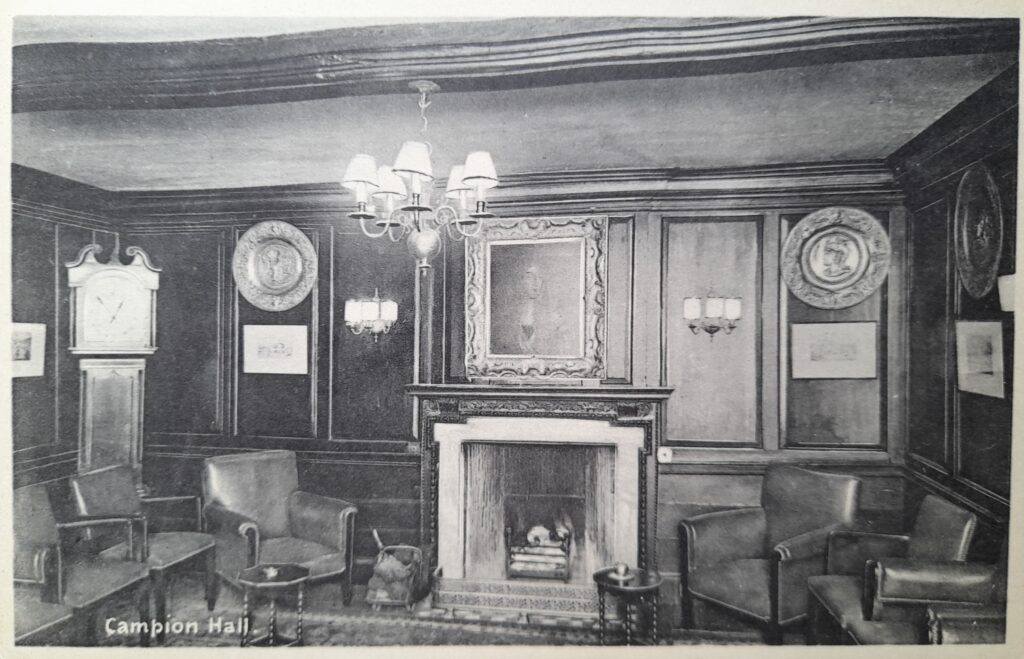
This postcard was created by Lofthouse, Crosbie & Co in c1936-7 for Campion Hall. It is the only picture we have of the room as it was first decorated, sadly only in black and white.
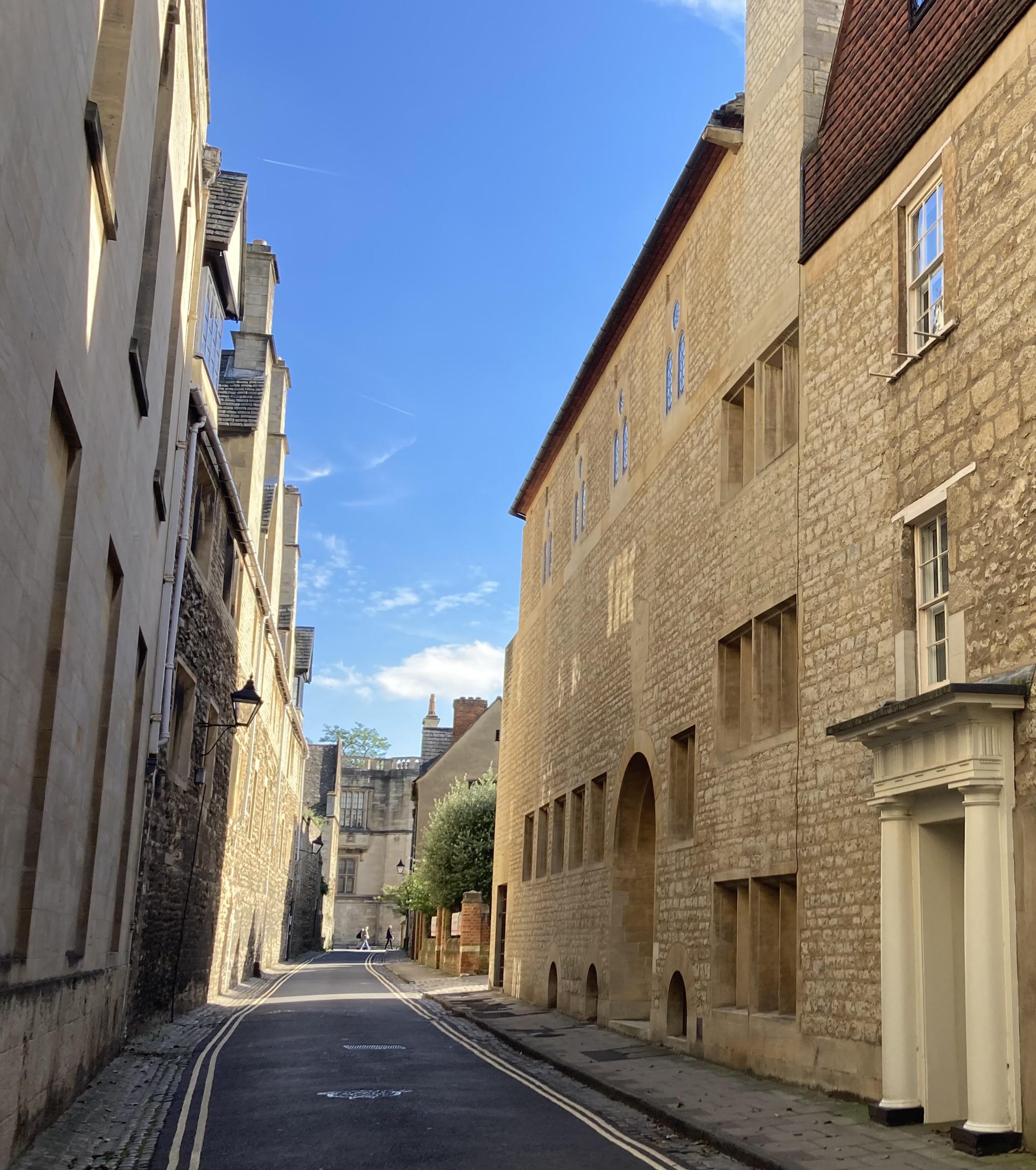
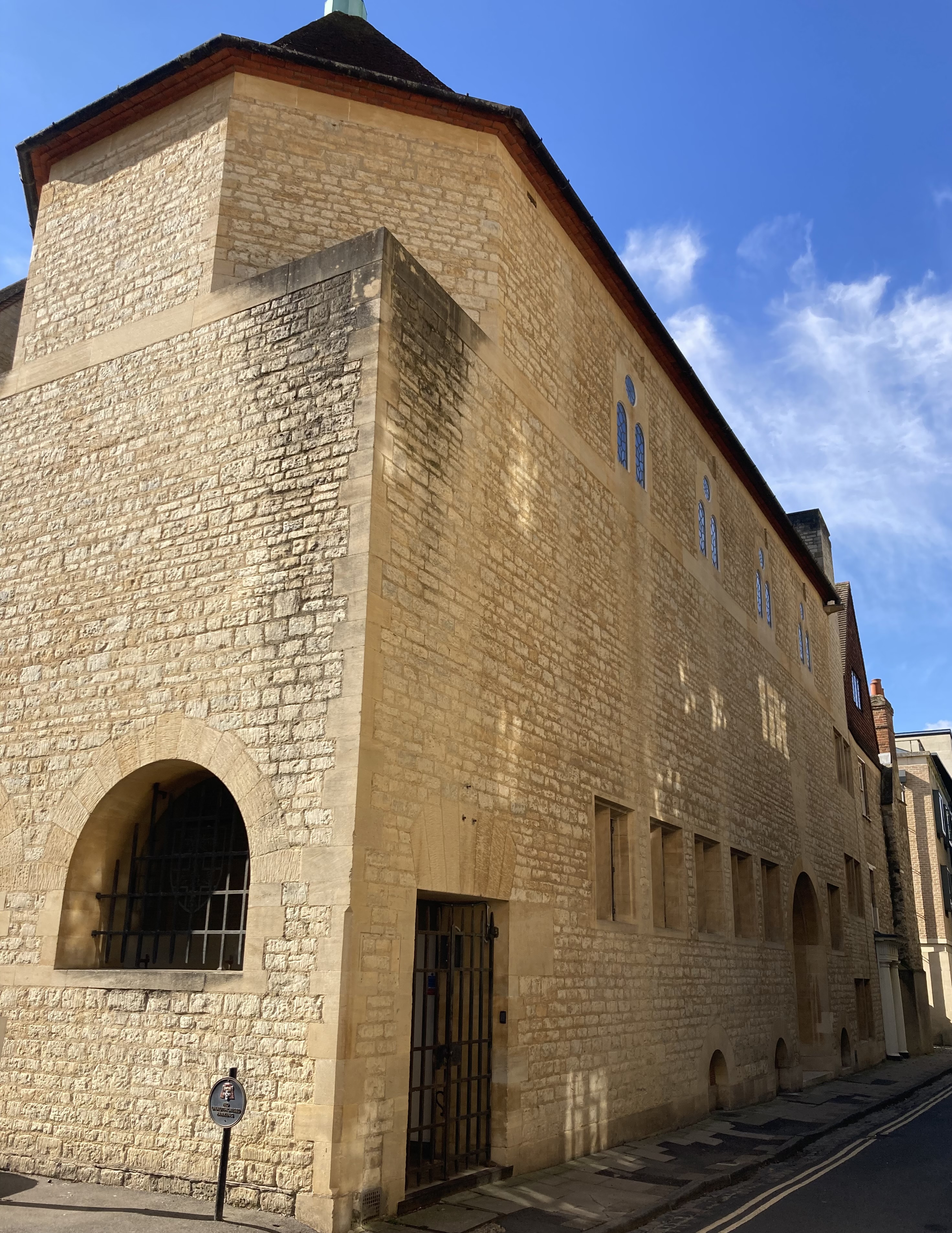
Built on the footprint of Micklem Hall, an old Elizabethan brewer’s house and student digs for over 100 years, with a garage attached that housed the horses that pulled the Oxford trams. These were re-integrated into the new design, an L shaped building, with the chapel on the first floor, with single rooms opening along a corridor, and with lecture rooms, library and dining hall underneath.
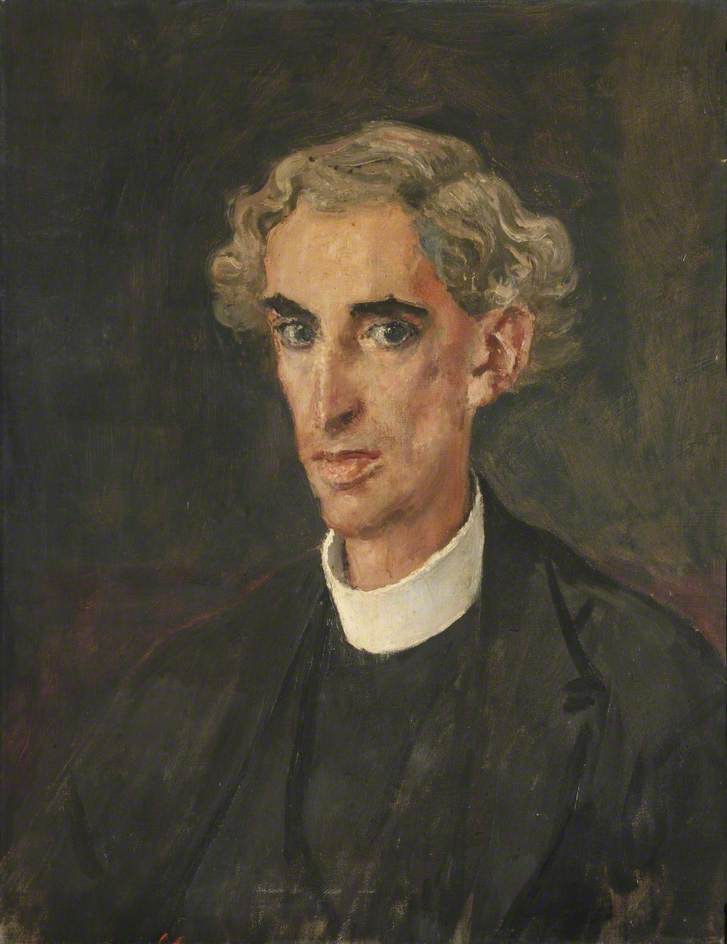
Father Martin D’Arcy by Augustus John, in what looks like the room that is now named after him.
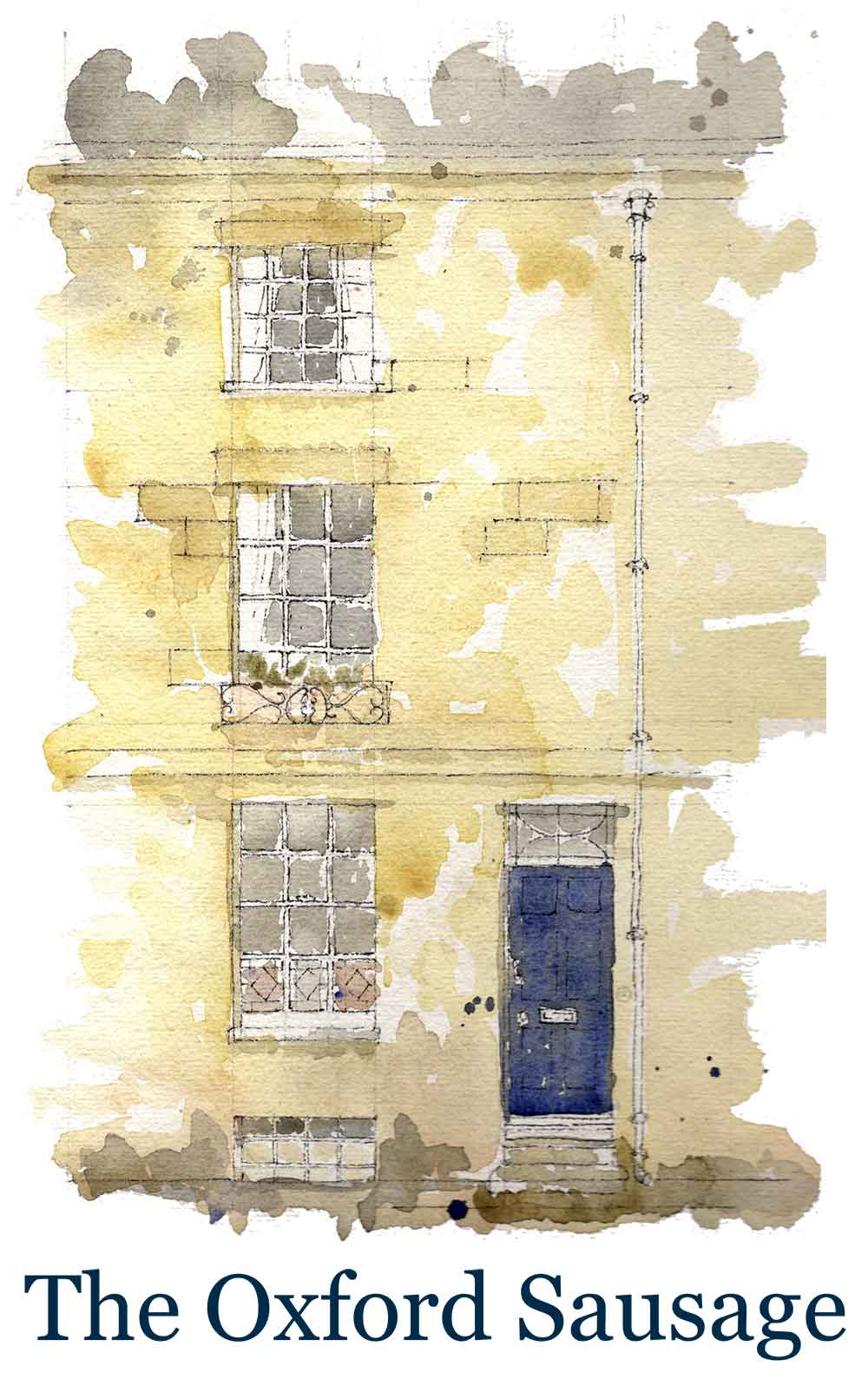
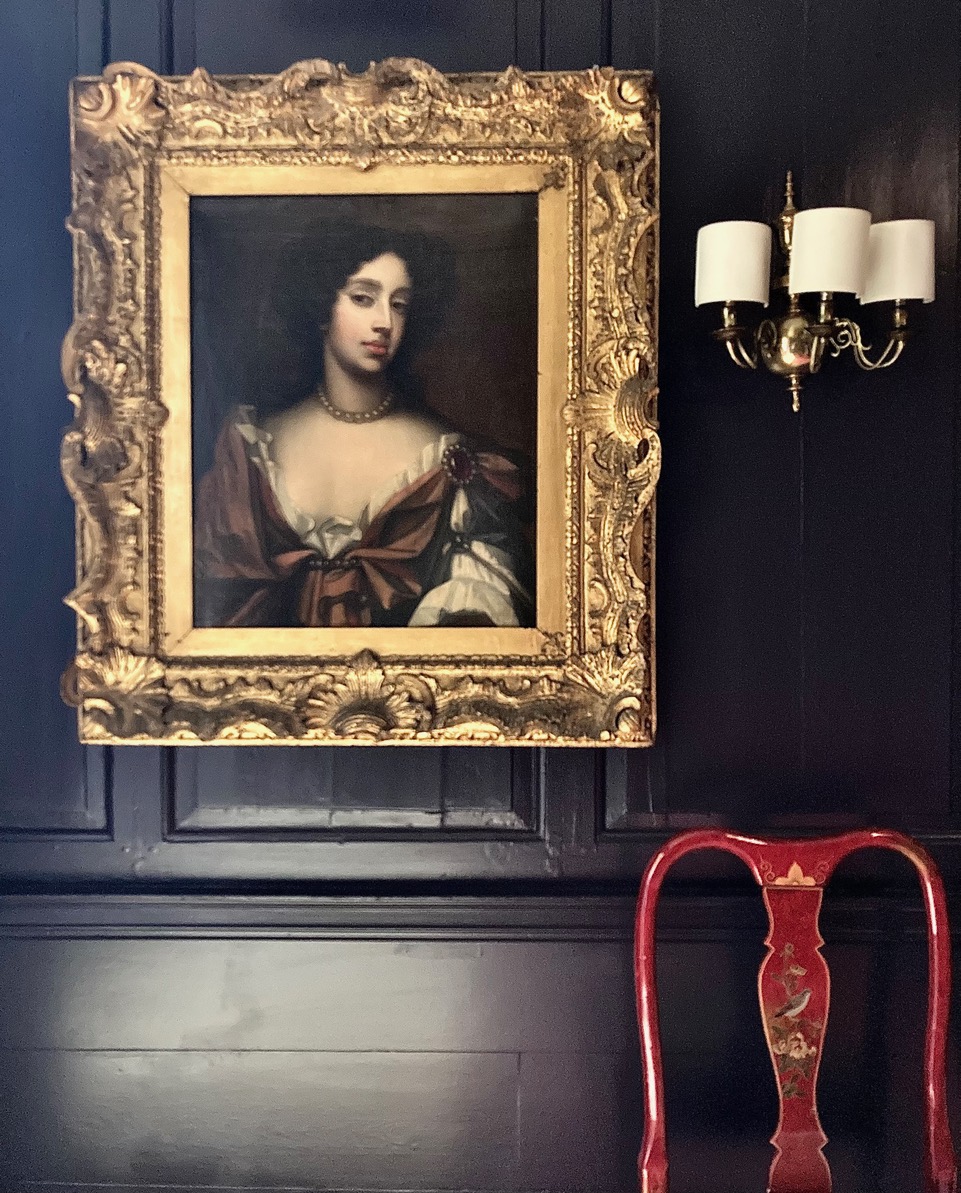
2 Comments
Join the discussion and tell us your opinion.
Exquisitely photographed.
Thank you for this – it brings the space alive. I came to it looking for John’s portrait of Fr. D’Arcy as mentioned in Peter Davidson’s also very vivid book “The Lighted Window”. Incidentally, Lutyens did not design Liverpool Cathedral, that was Sir George Gilbert Scott.